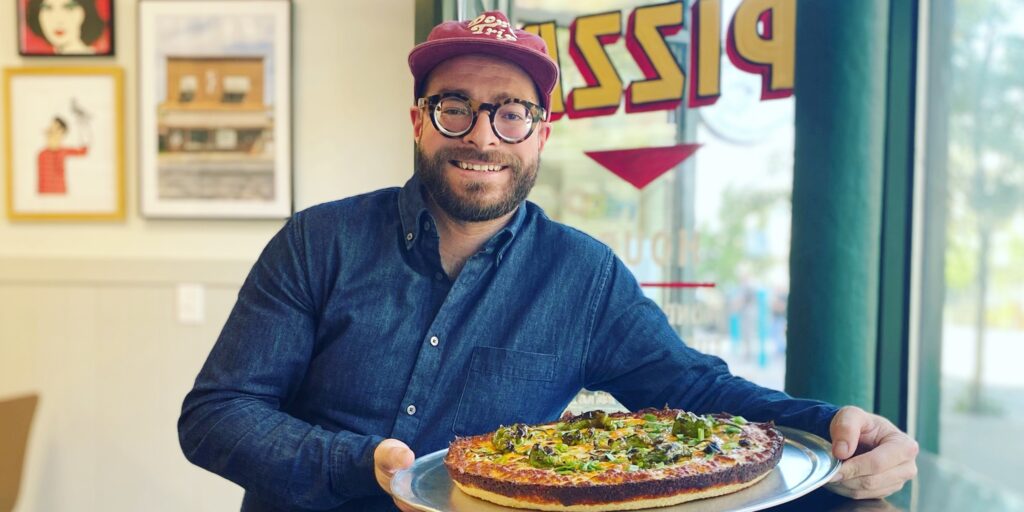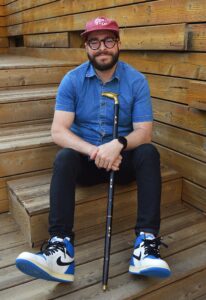
Five Things You Should Know When Diagnosed with Neuromuscular Disease
By Billy Zureikat | Thursday, August 24, 2023
Sometimes we think we have life figured out but then in the blink of an eye things can change. I lived 30 years of my life healthy and active. Sports, especially basketball, have been a passion of mine since I was a kid. I played throughout my life and even had a career in Sports media at ESPN. Just past the age of 30 however, things started to change for me.

Billy Zureikat
While still playing basketball recreationally with friends, I started to experience balance issues which led to falls. As time went on, I began losing muscle mass and strength in my legs to the point that I had trouble with simple tasks like climbing stairs, or even standing up without pushing with my upper body. Basketball was an afterthought. I could no longer run or jump. I also didn’t have any idea why these issues were happening. I began seeing multiple doctors who struggled to find a diagnosis. In March of 2021, after eight exhausting years filled with falls and frustration, I was diagnosed with Limb Girdle Muscular Dystrophy 2L.
Now, at the age of 38, I was faced with the harsh reality that I now was living with a rare disease that didn’t have any treatments or cures and that I had a permanent disability. Although the diagnosis gave me clarity, it sent me through some of the darkest and toughest times of my life. I was fixated on the past, focusing on all my losses, instead of celebrating any of the wins. It was so out of character for me to act like this and I really wanted to break out of the funk that I was in.
During the time that I noticed my body changing physically, I needed a new outlet to help cope. I turned to the kitchen. I began to harness my energy into becoming a better home cook and baker. I joke that I traded in my jersey for an apron. Pizza making, especially became a passion for me. It helped me find calm amidst the turbulence I was experiencing and would become the fuel that powered my reinvention.
I decided to use my new found love for cooking as a way to share my story to help raise funds and awareness for MDA by collaborating with Chicago restaurants. I created a pizza aptly named, “The Tripping Billy” poking fun at my balance issues and it was featured on the menu at Paulie Gees, here in Chicago. It helped raise $3000 alone that month but more importantly helped me realize that cooking could be my voice to inspire and advocate – and that my voice has power.
Flash forward a year and half and I have done over 35 collaborations around Chicago and the Tripping Billy has been featured at 13 different pizzerias helping raise over $42k for MDA in process. I hope to inspire people that in the face of change, you can reinvent yourself and do positive things.
I’ve grown so much in the past two years since my LGMD diagnosis. There are five things I want everyone to know about being diagnosed with a neuromuscular disease:
- It’s okay to grieve:
The mental hurdle of being diagnosed with a neuromuscular disease can sometimes outweigh the physical. It took me a bit to go through the stages of grief, but through therapy I learned that it’s okay to grieve. Some days will be harder than others. I believe that all you can hope for is more good days than bad. If that’s the case, you’re winning.
- There is nothing wrong with accepting help:
I always tried to do it alone. Unfortunately, that’s not possible and it could do more harm than help. Last year, I made the decision to start carrying a cane to protect myself from falls. I also know my physical limitations and now when a hand reaches out to assist me, I will grab it instead of turning away. Whether it’s a mobility aid, a handicap placard, or a helping hand, it’s okay accept the help.
- You are not alone:
I thought I was for so long but once I connected with MDA and through the power of social media, I’ve met many people in real life and virtually living through similar things. It can be both comforting and inspiring seeing others navigate life.
- Find what works well for you:
What has worked for me in my journey may not be the best for you. Although you may have the same diagnosis as someone else; so many other factors can differ. It may take time to navigate but find what puts you in the best position to succeed.
- Adjust and adapt:
Although things may be different physically, there are ways to adapt. I returned to the basketball court after thinking I’d lost it forever by teaching myself how to shoot flat footed. It may not be the same as it once was, but it’s something and brings me so much joy. Don’t let anything stop you.
Next Steps and Useful Resources
- Learn more about Limb Girdle Muscular Dystrophy (LGMD) here.
- Browse MDA’s Mental Health Hub.
- MDA’s Resource Center provides support, guidance, and resources for patients and families. Contact the MDA Resource Center at 1-833-ASK-MDA1 or ResourceCenter@mdausa.org
- Stay up-to-date on Quest content! Subscribe to Quest Magazine and Newsletter.
TAGS: Ambassadors, Mental Health, Relationships, Staying Active, Young Adults
TYPE: Blog Post
Disclaimer: No content on this site should ever be used as a substitute for direct medical advice from your doctor or other qualified clinician.




